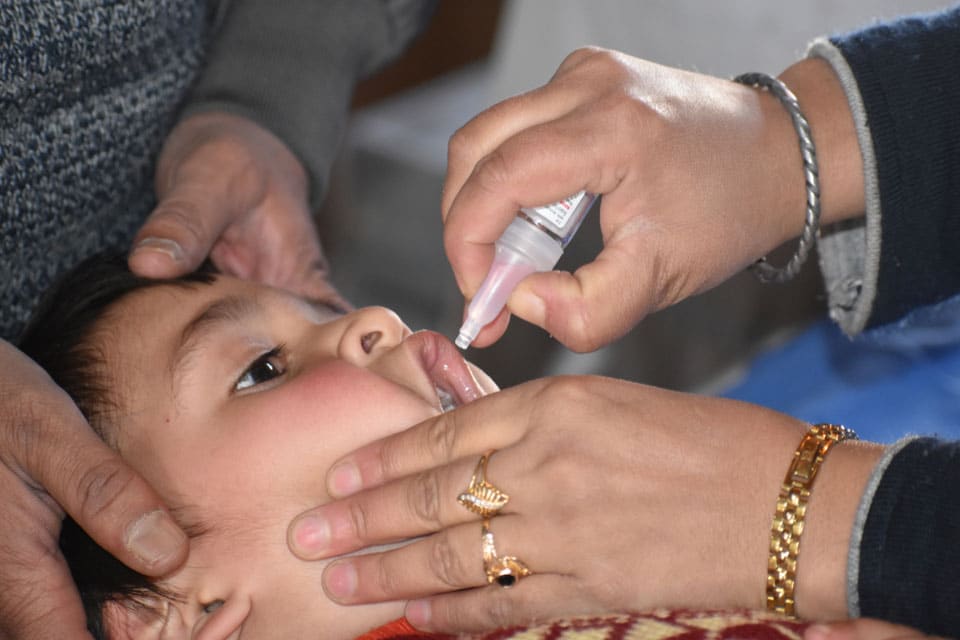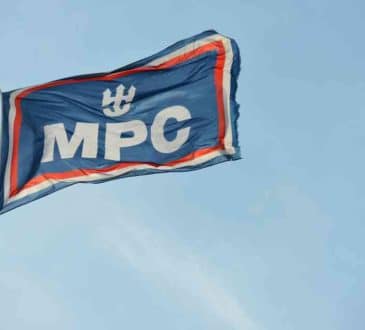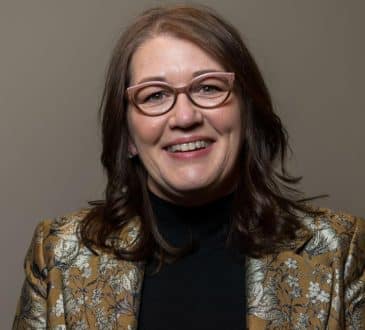Revealed: These Are The Polio-Free Countries, 2024

Poliovirus cases worldwide have dropped by 99.9 percent since the Global Polio Eradication Initiative (GPEI) began in 1988. The GPEI aims to deliver anti-polio immunization to low-income and developing nations. In the United States, polio was a massive healthcare problem in the 1950s. Paralytic poliomyelitis inflicted 20,000 patients in 1952. But with the GPEI, the developed countries with well-financed healthcare systems, like the United States, have benefitted from the vaccines that the program introduced.
In most of the world today, vaccination drives have curbed polio. Yet, there are still territories striving to combat this viral infection. In this article, CEOWorld Magazine’s researchers discussed the nine countries where anti-polio immunization efforts are ongoing. They also included relevant information regarding the serious ailment.
What is polio?
Polio is a highly infectious and debilitating viral ailment also known in the medical field as poliomyelitis. For thousands of years, this disease has been an occurrence and often affects children under five years old. Polio is incurable and does not possess any particular treatment plan. When the poliovirus inflames the spinal cord, patients suffer from paralysis. Approximately 70 percent of all poliomyelitis incidences do not exhibit signs of the sickness. They merely generate influenza-like symptoms like fever, nausea, and headaches.
However, about 1 to 5 percent of polio cases produce much more serious signs, consisting of meningitis and muscle paralysis that can result in fatality or permanent disability. Furthermore, recovered poliomyelitis patients may encounter post-polio syndrome, with signs happening again after 15 to 40 years.
What is the oral polio vaccine (OPV)?
The oral polio vaccine (OPV) is the main immunization substance used in the United States and many parts of the globe. This inoculant introduces a minimal dose of the live yet highly weakened poliovirus, making the patient immune from the sickness.Moreover, the OPV is a common and safe procedure. Using a hypodermic needle is unnecessary since doctors and nurses can administer this substance with a few drops on the patient’s tongue. Thus, the OPV is cost-effective and advantageous in terms of logistics and training.
What is the circulating vaccine-derived poliovirus (CVDPV)?
The circulating vaccine-derived poliovirus (CVDPV) is a more virulent type of poliovirus. This mutation happens in under-vaccinated locations where not all residents are immunized against the serious disease. These areas are also where the weakened viral infection can diffuse for one year or more.The CVDPV has an irregular occurrence and is controllable with similar procedures as wild polio or WPV1. Since this disease is quite rare, it frequently goes unperceived until an extreme incidence leads to acute flaccid paralysis (AFP) in a patient. AFP patients experience their limbs suddenly getting weak. Physicians closely analyze these incidences to know if they are a sign of a poliomyelitis epidemic.
Which countries today are still working hard to eliminate polio?
CEOWorld Magazine researchers gathered information about nations where poliomyelitis is still a healthcare concern in 2024. They discovered that the viral infection is endemic in Pakistan and Afghanistan. Additionally, periodic increases happen in Asia and Africa. In these regions, aggressive immunization initiatives have decreased the number of polio cases to a handful in one year. Nevertheless, these locations are still vulnerable to upsurges if the poliovirus is inadvertently introduced by various methods and agents like tourists from abroad.
Here are the nine countries that are striving to eradicate polio:
1. Pakistan: The coronavirus or COVID-19 pandemic restrictions in 2020 hampered the anti-polio vaccination initiatives in Pakistan. They are also believed to have caused 138 AFP cases in that same year, making the South Asian country the second with the most incidences of the health condition worldwide. Pakistan is one of the two territories where poliomyelitis is still endemic. Nonetheless, this country’s government has worked hard to make the sickness’s eradication within reach. In Pakistan, 17 WPV1 incidences were logged during the initial eight months of 2022. This figure is an improvement from the 84 cases recorded in 2020. Moreover, immunization efforts have continued with millions of Pakistani children getting vaccinated in January 2022 and continuing throughout that period. But too much flooding later that year led to healthcare concerns that were anticipated to spike the hazard caused by poliomyelitis’s spread.
2. Afghanistan: The GPEI intends to immunize all Afghan children. CEOWorld Magazine’s researchers found that their country is the second territory where poliomyelitis is endemic today. In 2020, Afghanistan was the leading nation in AFP from inoculant-derived poliovirus, logging 308 incidences. In that same year, the frequency of confirmed WPV1 cases dropped from 54 incidences diffused across 38 infected locations to just four cases spread across two areas one year later.
3. United Arab Emirates: The United Arab Emirates is one of the 84 high-risk poliomyelitis countries. To mitigate its status, it proclaimed in July 2021 that it would finance 16 million child immunizations. The GPEI supports this anti-polio project of the United Arab Emirates and agreed to allot roughly US$9.5 million for the effort.
4. Nigeria: In 2021, Nigeria logged a whopping 415 AFP cases, indicating that it still has a long way to go when it comes to eradicating polio. Nonetheless, in the past eight years, this West African nation did not have new wild poliovirus incidences. This scenario is even though half of the global polio incidences transpired in Nigeria as recently as 2012. In 2020, Nigeria proclaimed that it was poliomyelitis-free. Furthermore, there were zero fresh WPV1 incidences reported during the COVID-19 pandemic. Yet, the quarantine and the dearth of polio inoculants were an important problem in Nigeria at that time.
5. Sudan: In 2005, National Immunization Days resumed in Sudan. This effort has helped the poor and troubled communities in the northeast African country. The World Health Organization (WHO) and the United Nations Children’s Fund also took part in this vaccination drive. Healthcare conditions have improved in Sudan. However, in 2020, CVDPV instances surged in this country, which is one of the world’s most impoverished territories. 58 AFP incidences were recorded and are seen as the coronavirus quarantine’s potential outcome.
6. Chad: Chad is working hard to fight poliomyelitis. In 2020, CVDPV cases rose, with 101 AFP incidences. One year later, AFP figures plummeted to zero, yet they surged again to 18 cases through the initial eight months of 2022, per the WHO.
7. Cameroon: Similar to other territories, Cameroon was affected by the WHO’s decision to temporarily halt polio immunization efforts in 2020. Nonetheless, this Central African country is making progress. In 2020, just seven AFP incidences were logged, and three cases in 2021.
8. Angola: The COVID-19 pandemic hindered Angolan children from getting vaccinated against polio. In 2020, this inoculant shortage resulted in 138 AFP incidences. Nonetheless, anti-polio immunization efforts resumed by the culmination of that year. Just three AFP cases were recorded in 2021.
9. Democratic Republic of the Congo: The Democratic Republic of the Congo has grappled with CVDPV more than any other nation. For over half a decade, this central African country has logged many AFP incidences, which are as follows: 22 cases in 2017; 20 incidences in 2018; 88 cases in 2019; 81 cases in 2020; 28 incidences in 2021; and 110 cases and more in 2022. Meanwhile, in the Republic of the Congo, which is the Democratic Republic of the Congo’s neighboring country, a total of four AFP cases were recorded during that whole period.
As of 2024, only one of the original three WPV1 types is circulating. CEOWorld Magazine’s researchers found that the governments of the nine countries listed above are doing their best to make their locales polio-free. This aspired condition pertains to the absence of WPV1.
Although polio remains a concern in the nations mentioned in this article, this serious disease’s suppression is not far from possible. After all, citizens, governments, and non-governmental organizations cooperate with one another, which makes poliomyelitis’s much-anticipated disappearance within reach.
Polio-Free Countries, 2024
| Country | Declared polio-free |
|---|---|
| Afghanistan | ongoing |
| Albania | 1978 |
| Algeria | 1996 |
| American Samoa | 1950 |
| Andorra | 1959 |
| Angola | 2001 |
| Anguilla | 1962 |
| Antigua and Barbuda | 1965 |
| Argentina | 1984 |
| Armenia | 1995 |
| Australia | 1972 |
| Austria | 1980 |
| Azerbaijan | 1995 |
| Bahamas | 1967 |
| Bahrain | 1993 |
| Bangladesh | 2000 |
| Barbados | 1967 |
| Belarus | 1994 |
| Belgium | 1979 |
| Belize | 1981 |
| Benin | 2000 |
| Bhutan | 1986 |
| Bolivia | 1989 |
| Bosnia and Herzegovina | 1993 |
| Botswana | 1989 |
| Brazil | 1989 |
| Brunei | 1978 |
| Bulgaria | 1982 |
| Burkina Faso | 2000 |
| Burundi | 1999 |
| Cambodia | 1997 |
| Cameroon | 1999 |
| Canada | 1979 |
| Cape Verde | 1988 |
| Cayman Islands | 1958 |
| Central African Republic | 2000 |
| Chad | 2000 |
| Chile | 1975 |
| China | 1994 |
| Colombia | 1991 |
| Comoros | 1983 |
| Cook Islands | 1959 |
| Costa Rica | 1972 |
| Croatia | 1990 |
| Cuba | 1962 |
| Cyprus | 1995 |
| Czech Republic | 1960 |
| Denmark | 1976 |
| Djibouti | 1999 |
| Dominica | 1980 |
| Dominican Republic | 1985 |
| DR Congo | 2000 |
| Ecuador | 1990 |
| Egypt | 2004 |
| El Salvador | 1987 |
| Equatorial Guinea | 1992 |
| Eritrea | 1992 |
| Estonia | 1961 |
| Eswatini | 1989 |
| Ethiopia | 2001 |
| Fiji | 1962 |
| Finland | 1963 |
| France | 1989 |
| French Guiana | 1983 |
| French Polynesia | 1982 |
| Gabon | 1996 |
| Gambia | 1997 |
| Georgia | 1991 |
| Germany | 1990 |
| Ghana | 2000 |
| Greece | 1982 |
| Grenada | 1970 |
| Guam | 1964 |
| Guatemala | 1990 |
| Guinea | 1999 |
| Guinea Bissau | 1999 |
| Guyana | 1962 |
| Haiti | 1989 |
| Honduras | 1989 |
| Hong Kong | 1983 |
| Hungary | 1969 |
| Iceland | 1960 |
| India | 2011 |
| Indonesia | 1995 |
| Iran | 1997 |
| Iraq | 2000 |
| Ireland | 1965 |
| Israel | 1988 |
| Italy | 1982 |
| Ivory Coast | 2000 |
| Jamaica | 1982 |
| Japan | 1980 |
| Jordan | 1988 |
| Kazakhstan | 1995 |
| Kenya | 1988 |
| Kuwait | 1985 |
| Kyrgyzstan | 1992 |
| Laos | 1996 |
| Latvia | 1992 |
| Lebanon | 1994 |
| Lesotho | 1987 |
| Liberia | 1999 |
| Libya | 1991 |
| Lithuania | 1971 |
| Luxembourg | 1963 |
| Macau | 1975 |
| Madagascar | 1997 |
| Malawi | 1992 |
| Malaysia | 1986 |
| Maldives | 1980 |
| Mali | 1999 |
| Malta | 1964 |
| Marshall Islands | 1976 |
| Mauritania | 1999 |
| Mauritius | 1980 |
| Mexico | 1990 |
| Micronesia | 1970 |
| Moldova | 1996 |
| Monaco | 1964 |
| Mongolia | 1993 |
| Montserrat | 1976 |
| Morocco | 1989 |
| Mozambique | 1993 |
| Myanmar | 1996 |
| Namibia | 1995 |
| Nauru | 1910 |
| Nepal | 2000 |
| Netherlands | 1960 |
| New Caledonia | 1982 |
| New Zealand | 1962 |
| Nicaragua | 1981 |
| Niger | 2006 |
| Nigeria | 2020 |
| Niue | 1950 |
| North Korea | 1996 |
| North Macedonia | 1993 |
| Northern Mariana Islands | 1960 |
| Norway | 1969 |
| Oman | 1993 |
| Pakistan | ongoing |
| Palau | 1940 |
| Palestine | 1988 |
| Panama | 1972 |
| Papua New Guinea | 1996 |
| Paraguay | 1985 |
| Peru | 1991 |
| Philippines | 1993 |
| Poland | 1984 |
| Portugal | 1986 |
| Puerto Rico | 1974 |
| Qatar | 1990 |
| Republic of the Congo | 2000 |
| Reunion | 1979 |
| Romania | 1992 |
| Russia | 1996 |
| Rwanda | 1999 |
| Saint Kitts and Nevis | 1969 |
| Saint Lucia | 1970 |
| Saint Vincent and the Grenadines | 1977 |
| Samoa | 1950 |
| San Marino | 1982 |
| Sao Tome and Principe | 1983 |
| Saudi Arabia | 1995 |
| Senegal | 1998 |
| Seychelles | 1980 |
| Sierra Leone | 1999 |
| Singapore | 1978 |
| Slovakia | 1960 |
| Slovenia | 1978 |
| Solomon Islands | 1972 |
| Somalia | 2002 |
| South Africa | 1989 |
| South Korea | 1983 |
| Spain | 1988 |
| Sri Lanka | 1993 |
| Sudan | 2004 |
| Suriname | 1982 |
| Sweden | 1977 |
| Switzerland | 1982 |
| Syria | 1998 |
| Tajikistan | 1997 |
| Tanzania | 1996 |
| Thailand | 1997 |
| Timor Leste | pre-1985 |
| Togo | 1999 |
| Tokelau | 1950 |
| Tonga | 1982 |
| Trinidad and Tobago | 1972 |
| Tunisia | 1994 |
| Turkey | 1998 |
| Turkmenistan | 1996 |
| Turks and Caicos Islands | 1977 |
| Tuvalu | 1936 |
| Uganda | 1996 |
| Ukraine | 1996 |
| United Arab Emirates | 1992 |
| United Kingdom | 1982 |
| United States | 1979 |
| Uruguay | 1978 |
| Uzbekistan | 1995 |
| Vanuatu | 1989 |
| Venezuela | 1989 |
| Vietnam | 1997 |
| Wallis and Futuna | 1972 |
| Yemen | 1999 |
| Zambia | 1995 |
| Zimbabwe | 1991 |
Add CEOWORLD magazine to your Google News feed.
Follow CEOWORLD magazine headlines on: Google News, LinkedIn, Twitter, and Facebook.
This report/news/ranking/statistics has been prepared only for general guidance on matters of interest and does not constitute professional advice. You should not act upon the information contained in this publication without obtaining specific professional advice. No representation or warranty (express or implied) is given as to the accuracy or completeness of the information contained in this publication, and, to the extent permitted by law, CEOWORLD magazine does not accept or assume any liability, responsibility or duty of care for any consequences of you or anyone else acting, or refraining to act, in reliance on the information contained in this publication or for any decision based on it.
Copyright 2024 The CEOWORLD magazine. All rights reserved. This material (and any extract from it) must not be copied, redistributed or placed on any website, without CEOWORLD magazine' prior written consent. For media queries, please contact: info@ceoworld.biz
SUBSCRIBE NEWSLETTER








